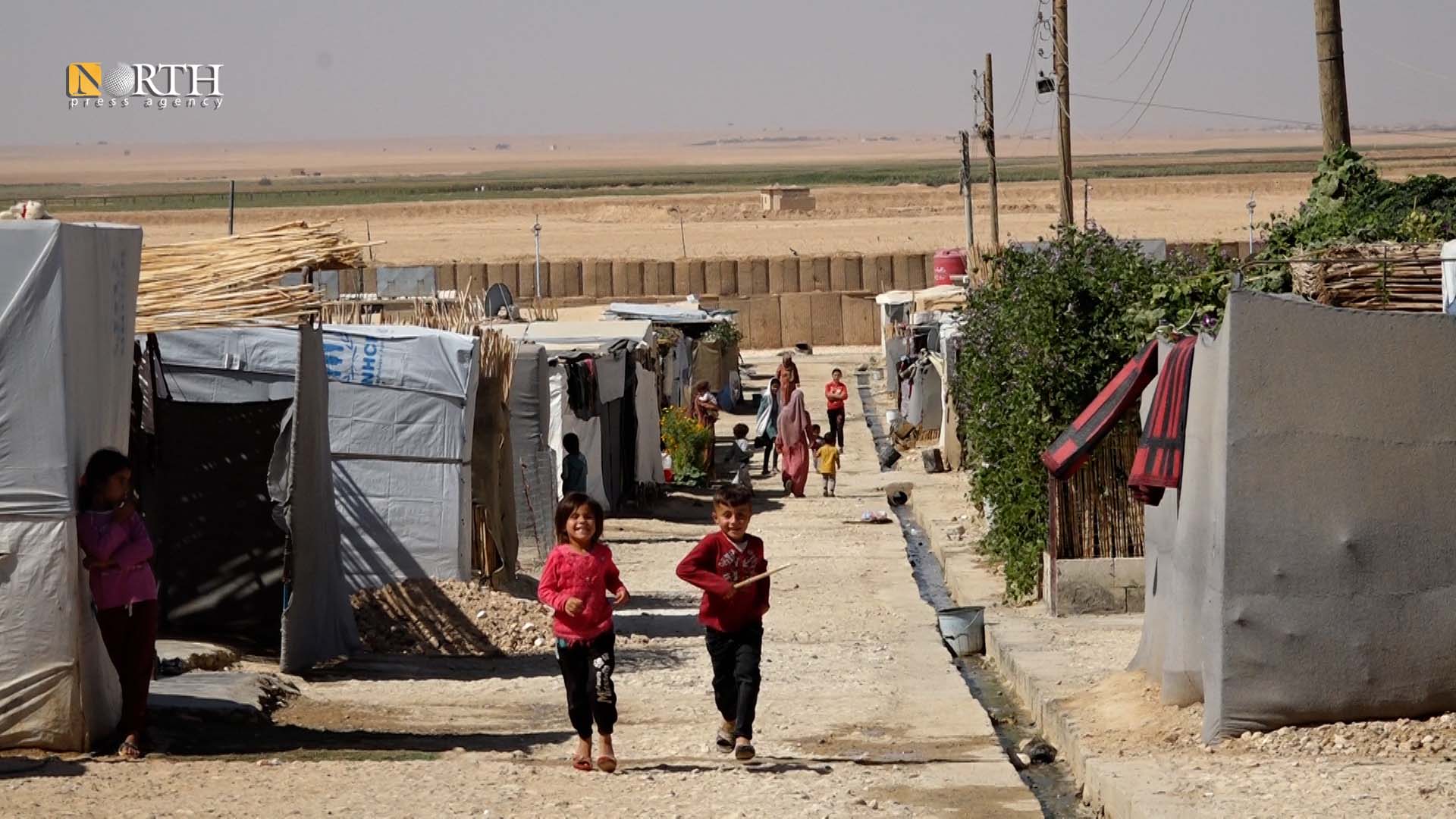RAQQA, Syria (North Press) – Internal Displaced People (IDP) of the city of Tel Abyad in the north of Raqqa Governorate, northern Syria, keeps dreaming of returning to their homes despite the passage of three years of their displacement.
Zaghira al-Hamad, 25, an IDP from Tel Abyad who lives in Tel al-Samen camp, north of Raqqa, has never lost hope to return home.
However, the woman, who is a mother of three, cannot return right now because her husband was a fighter within the ranks of the Syrian Democratic Forces (SDF). She had left her house after receiving threats.
On October 9, 2019, Turkish forces and their affiliated armed opposition factions, known as Syrian National Army (SNA), launched a military operation against the city of Tel Abyad in the north of Raqqa and Sere Kaniye (Ras al-Ain) in the north of Hasakah.
The operation named “Peace Spring”, led to the occupation of the two cities and their countryside in addition to the displacement of more than 300.000 of the original inhabitants.
We want to return home
At the time, al-Hamad did not leave her house immediately with her child and mother-in-law. Days later, a detachment of the Ahrar al-Sharqiya faction raided the house under the clock of searching for arms owned by her husband.
She tried to convince them that her husband had lost his life in the fight against the Islamic State (ISIS) and that he had his arms with him, however, in vain. They “were not looking for arms.”
In July 2021, the US Department of Treasury sanctioned the Turkish-backed Ahrar al-Sharqiya faction “for violations of the rights of civilians and systematic assault on the Syrian Kurds.”

The leader of Ahrar al-Sharqiya, Abu Hatem Shaqra, and his faction committed crimes and grave violations of human rights, most notably the assassination of the Kurdish female politician, Hevrin Khalaf in 2019, in addition to the execution of detainees, the kidnapping of Yezidi women and children, and having former ISIS members within the ranks of his faction.
“They were looking for money. They found a pistol pocket. They threatened me if I did not give them the pistol they would kill me. After a dispute, they brought in a military unit and turned the house of my brother-in-law into a military post,” she said.
Under intense threats and press from repeated patrol telling her mother-in-law to exit otherwise they would be killed, she was displaced to the village of al-Asadiya, north of Raqqa. That was just the beginning.
Al-Hamad moved to Tel al-Samen camp. She lives with her mother-in-law that had lost her sight after she was bereaved of her son.
6.000 IDPs including 1.200 families, mostly children, women and elderly people, live in Tel al-Samen camp. And 120 of them are people with disabilities, according to the camp management.
The Autonomous Administration of North and East Syria (AANES) established Tel al-Samen Camp, 35 kilometers north of Raqqa to shelter IDPs from Tel Abyad and its countryside that fled their areas during the Turkish military operation in 2019.
The AANES was first formed in 2014 in the Kurdish-majority regions of Afrin, Kobani and Jazira in northern Syria following the withdrawal of the government forces. Later, it was expanded to Manbij, Tabqa, Raqqa, Hasakah and Deir ez-Zor after the SDF defeated ISIS militarily there.
They live in a tent that lacks basic needs to protect them from scorching heat of summer and freezing cold of winter.
They have no sponsor. They depend on aid provided by humanitarian organizations.
Zaghira recalls the days she had at her house. Pain and aspiration is felt with her words. She holds back and remains defiant. She narrates her plight steadfastly. Her son asks when they would return home. Zaghira remains defiant, “This tent is a temporary one, this piece of land has its owners, and we want to return home.”
Relentless shelling
The people in Tel al-Samen camp have never lost hope to return home, though the displacement journey has prolonged. However, the relentless shelling by the Turkish forces and the SNA factions arouse fears. They remain attached to return home.
They prefer lack of aid and the difficult situation they live in to returning without guarantees. They are compelled to remain at the camp. They cannot afford to either buy or rent houses.
Ain Issa and its countryside as well as villages in the western countryside of Tel Abyad and other areas in northeastern Syria have been witnessing relentless shelling by the Turkish forces and the affiliated SNA factions since 2019 following the so-called Peace Spring operation against Sere Kaniye (Ras al-Ain) and Tel Abyad.

